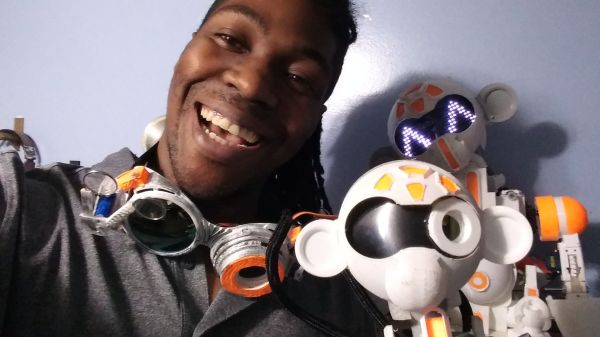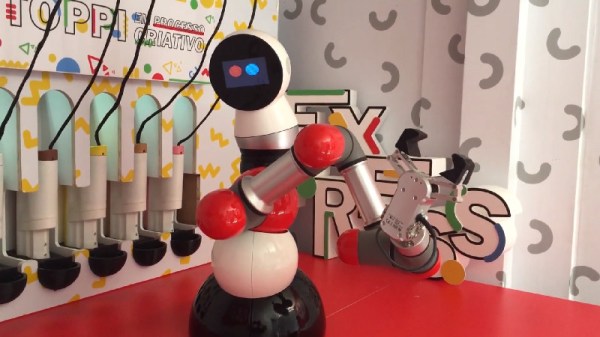The show-stealing droids of Star Wars, R2-D2 and C-3PO, are quite challenging to replicate at home, due to their size and complexity. [curiousmarc] had built the former, with much work going into drawing and design. The more humble Mouse Droid, as seen skittering about the halls of the Death Star, is a considerably easier build — especially with this somewhat improvised approach.
The build relies on reject parts from [curiousmarc]’s R2-D2 build, and other stuff laying around the house, like a toy eggbeater, a VFD, and other electronic bits and pieces. An RC car chassis was placed in the droid’s vacuum-formed shell in order to provide propulsion, with much of the rest of the work being decoration of the housing with various sci-fi ephemera. There’s also a pair of Arduinos inside, controlling the VFD, sound output, and the movable antenna dish on top.
It’s a build with a lot of personality. The sounds, flickering display, and moving antenna do a lot to imbue this droid with a soul, something Lucasfilm readily achieved with many of the robots in the series. It’s something we’ve also seen in robot companion builds from [Jorvon Moss], which are quite sci-fi in their own way, too. Video after the break.
Continue reading “2022 Sci-Fi Contest: A Star Wars Mouse Droid Of Your Very Own”















